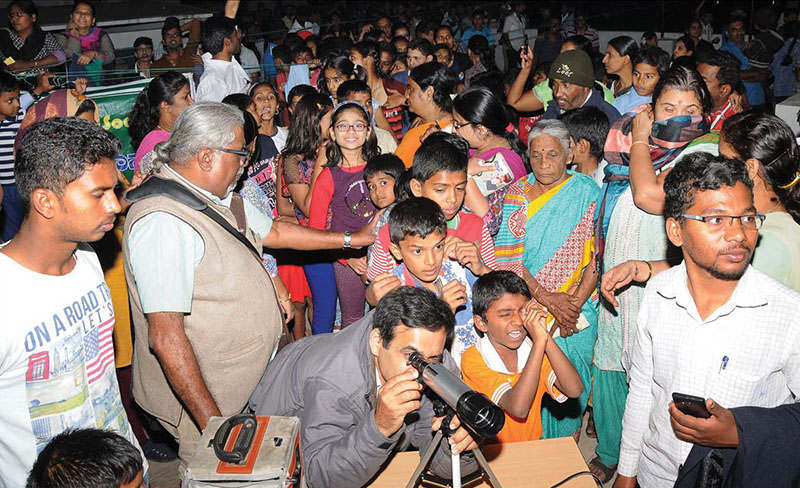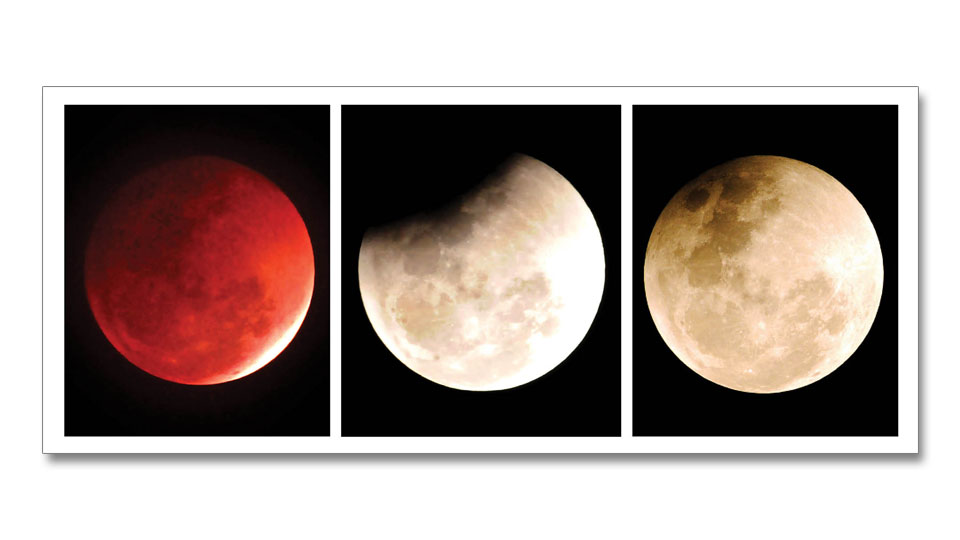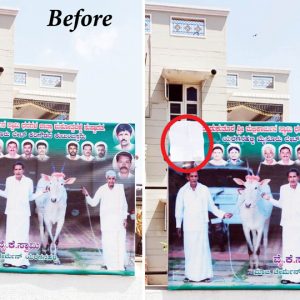Mysuru: Last night we were privileged to witness a Super Moon, Blood Moon, Blue Moon and a Total Lunar Eclipse. The Eclipse was visible in the region covering Middle East, Asia, Indonesia, Europe, Australia, New Zealand, North and South America, Northeast Africa, Antarctica, Pacific Ocean, and Hawaiian Islands. The eclipse was visible from all parts of India. This happened after 150 years, with the earlier one occurring on March 31, 1866.
The duration of the Total Lunar Eclipse was 3 hours and 18 minutes. The moon entered the Penumbra at 4:21 pm and analysing the penumbral phase, the total eclipse commenced at 6:21 pm and terminated by 7:37 pm. It left the Penumbra at 9:38 pm. The greatest phase of the eclipse eventuated at 6:59 pm.
The magnitude of the total eclipse of the moon was 1.110. Following first contact, the Moon’s more easterly limb showed a growing dark “nick” as it began to enter the umbra more deeply. At a total lunar eclipse, the Moon took about an hour to become completely immersed in the umbra.

Sky gazers throng Taralabalu Institution in city yesterday where
arrangement was made to witness the eclipse.
To begin with, there was little to see beyond a darkening of part of the Moon, but as the eclipsed portion increased, reddish-orange became evident. The curved edge of the umbra showed a slight blue fringe. Refraction of sunlight – particularly at the red end of the spectrum – through Earth’s atmosphere meant that the umbra was not completely dark. Consequently, the Moon dimmed and often took on a reddish colour, which became increasingly apparent as the umbral phase advanced.
Many observers anticipated to measure the precise extent of the umbra during eclipses by timing the passage of its edge across identifiable lunar features such as craters. In totality, the Moon – completely immersed in shadow – normally portrayed red, orange and yellow colours, often with some gradation. Those parts of the Moon closer to the edge of the umbra often appeared somewhat brighter and more yellowish than those toward the centre, which was red. Sunlight diffusing through the Earth’s atmosphere bathed the Moon in a dull glow that reduced it to about one ten-thousandth the normal brightness of the full Moon.
The shadow’s darkness varied with the amount of cloud, dust and pollution that was suspended in the Earth’s atmosphere at the time of the eclipse. Occasionally, the obscuration was sufficiently dense to make the Moon disappear, while at other times, the shadow imparted only a pale rusty hue to the Moon.
There was absolutely no harm in witnessing this gorgeous astronomical spectacle and could witness immaculately by using a reflecting telescope or astral binoculars. After this year, the next time that a Blue Moon passes through Earth’s umbra will be on Dec. 31, 2028, and, after that, on Jan. 31, 2037.
—Dr. S.A. Mohan Krishna, Amateur Astronomer








Recent Comments